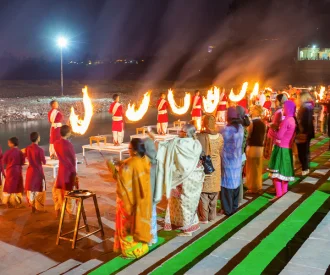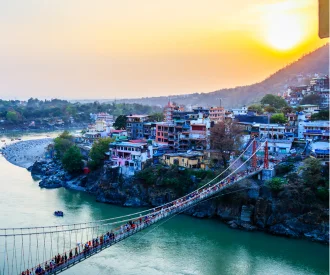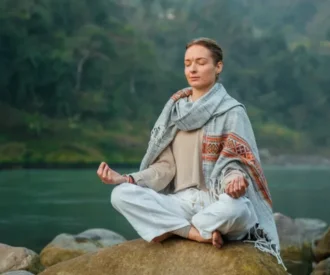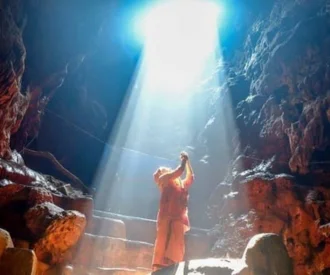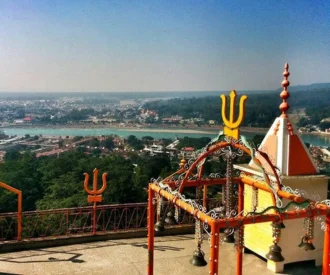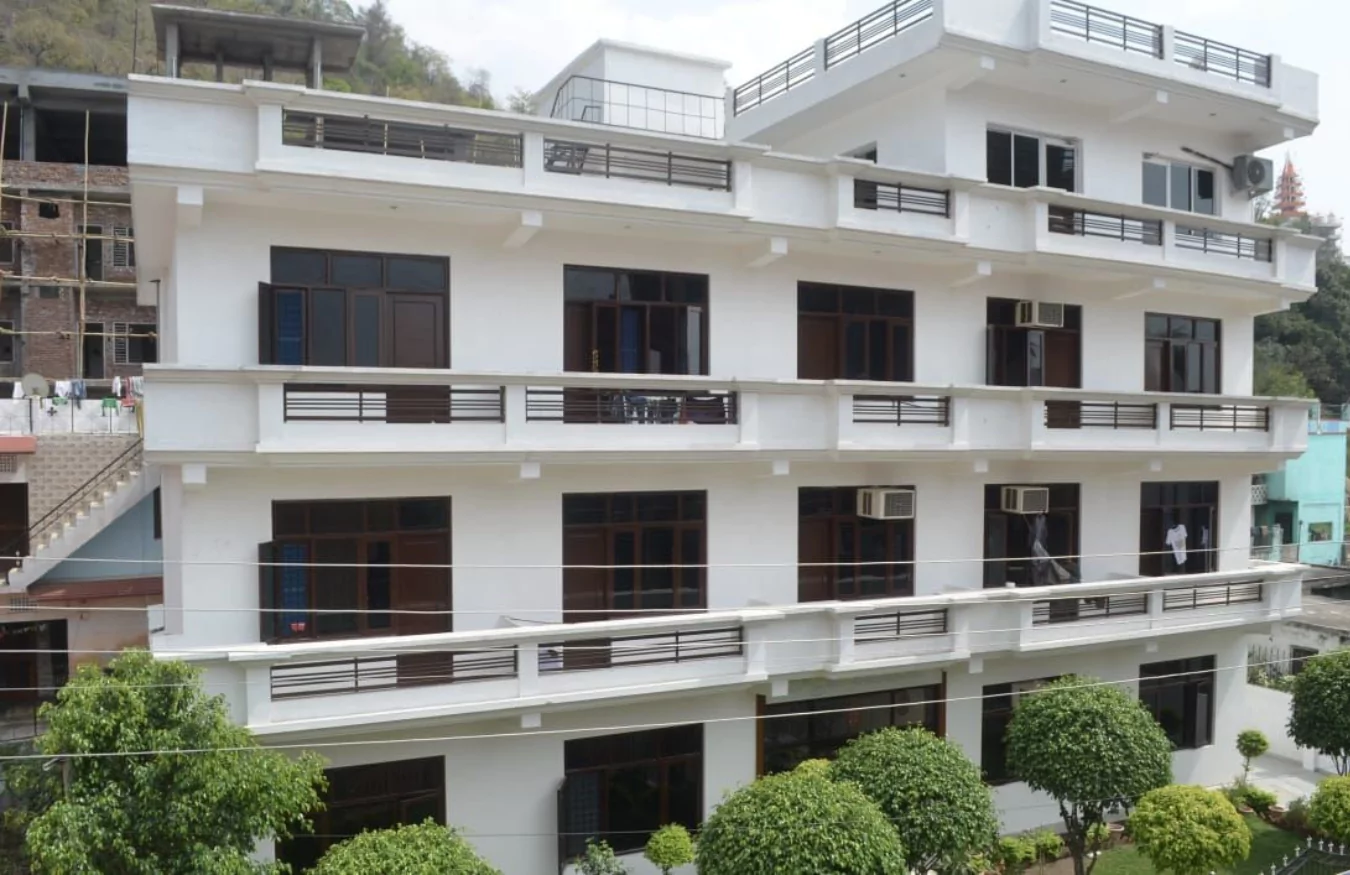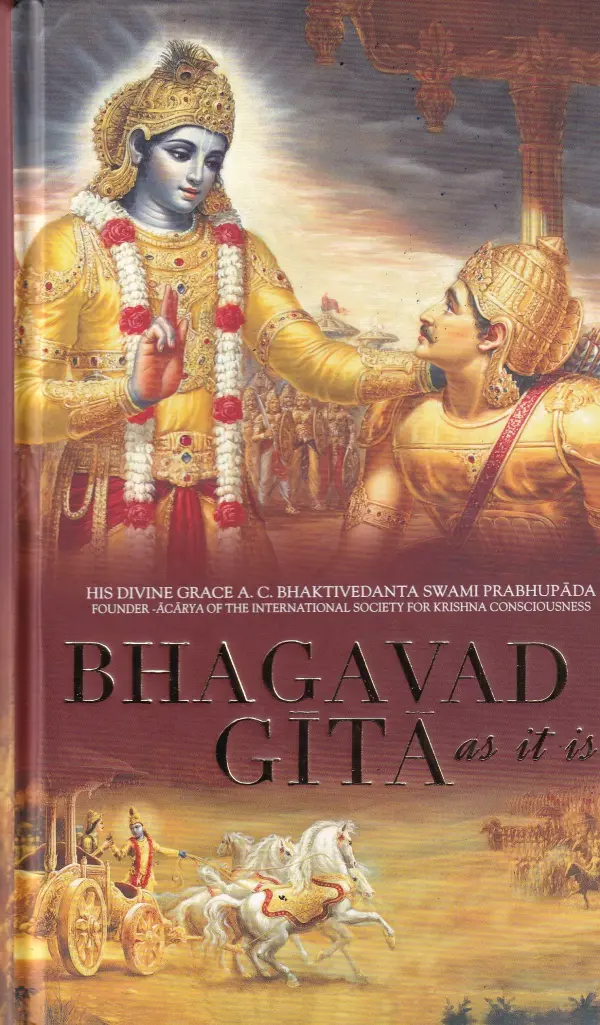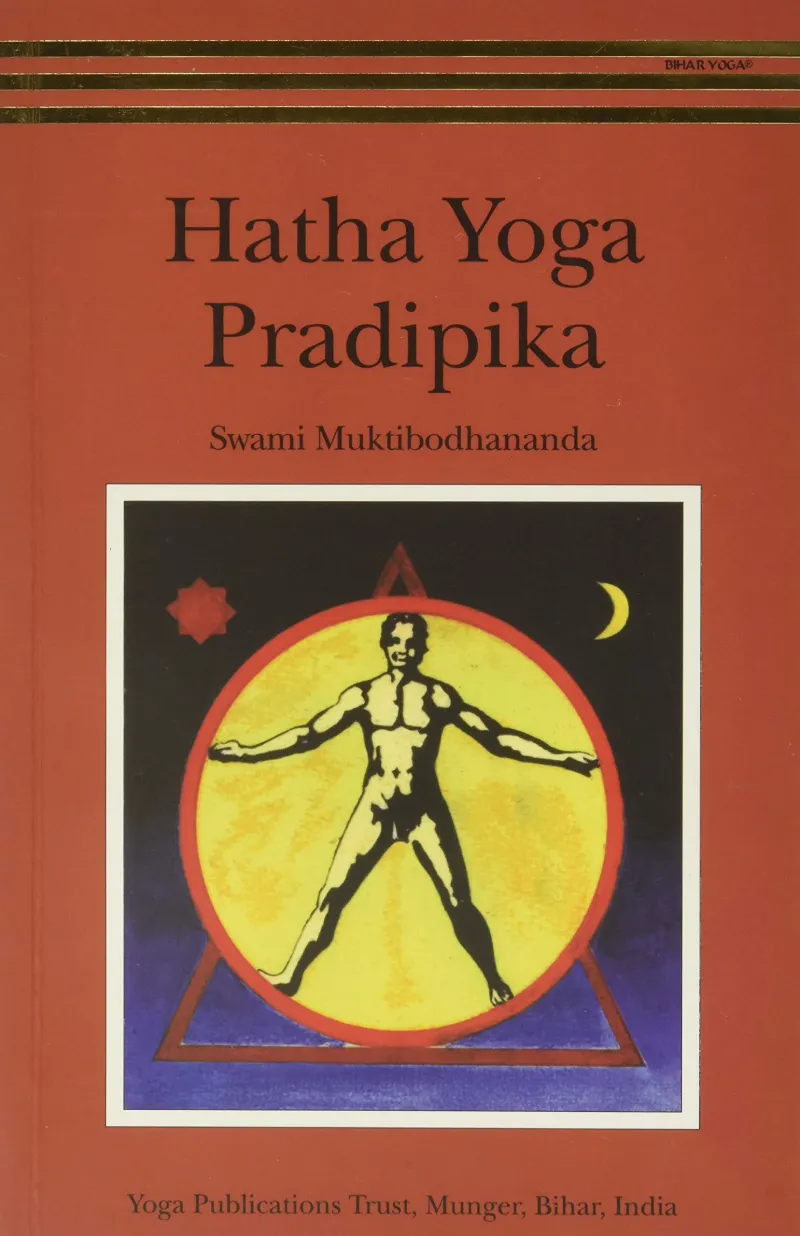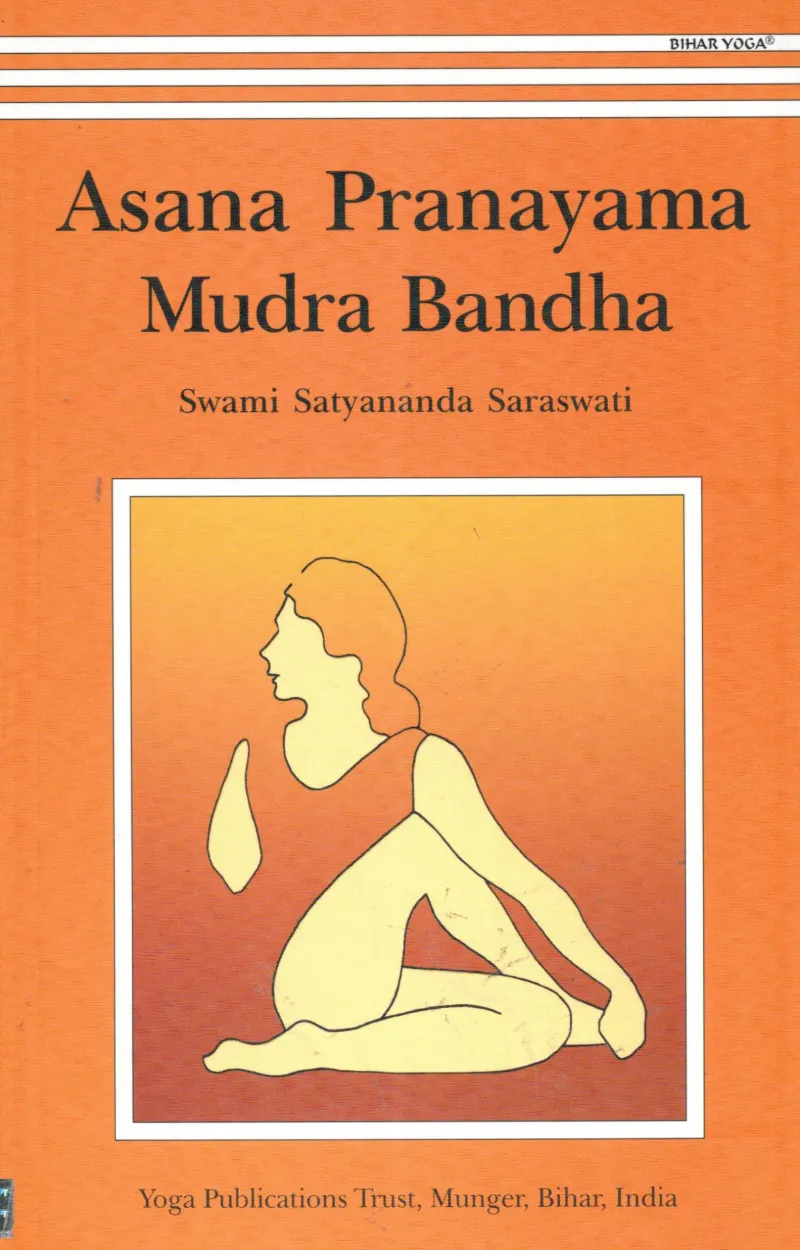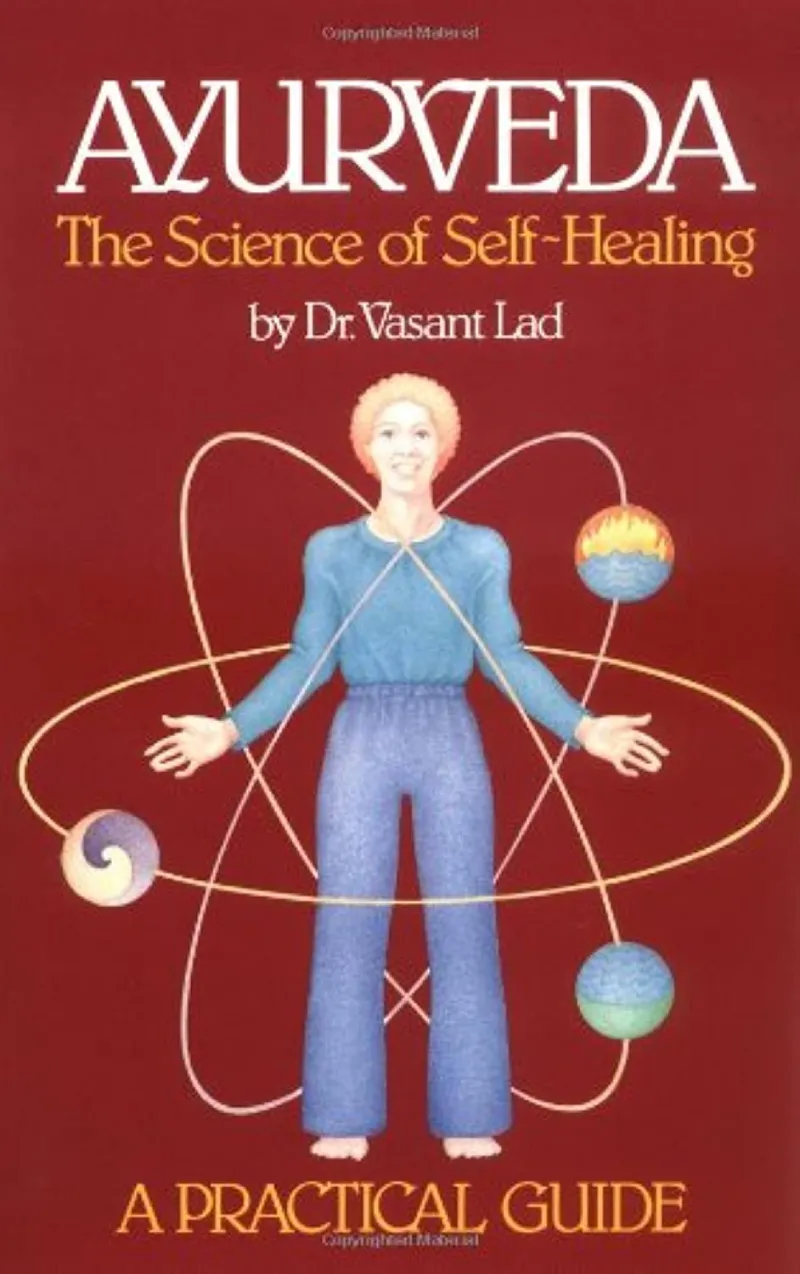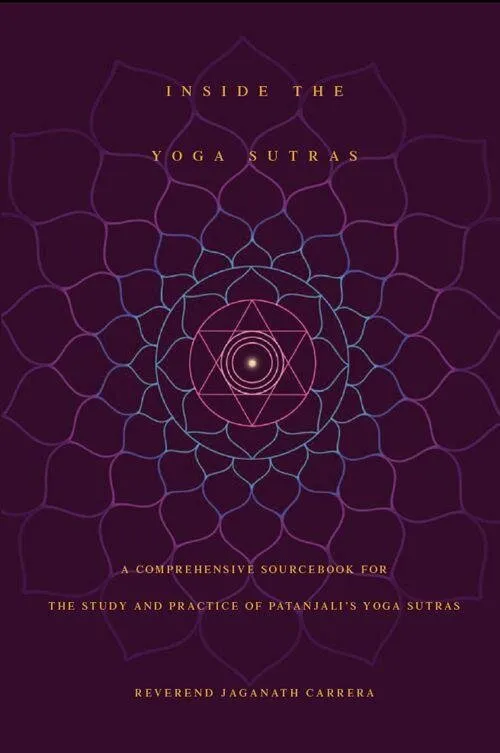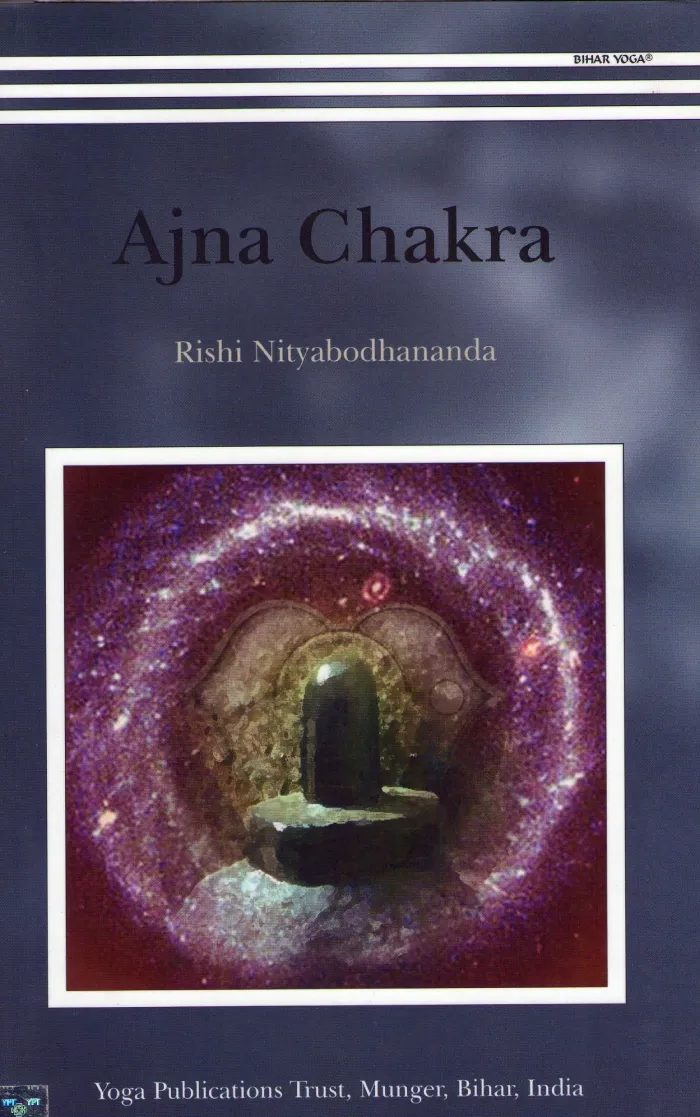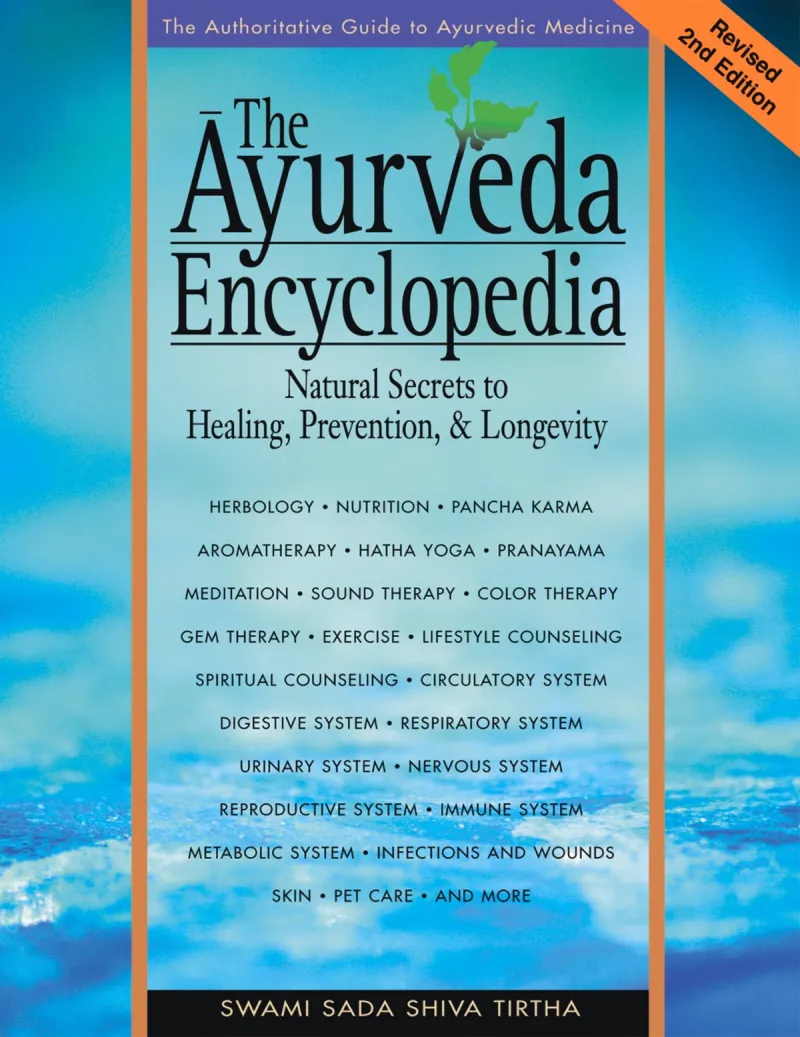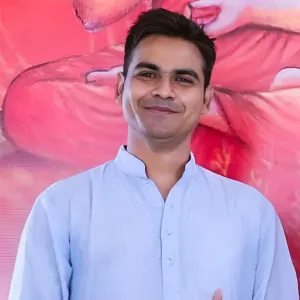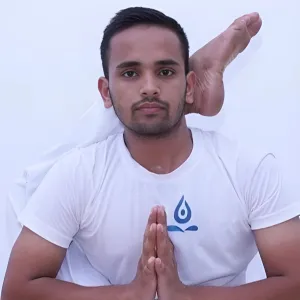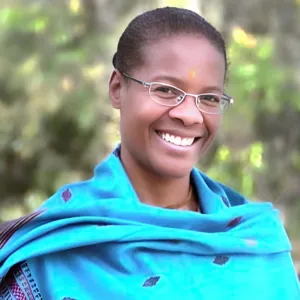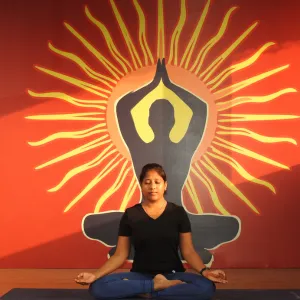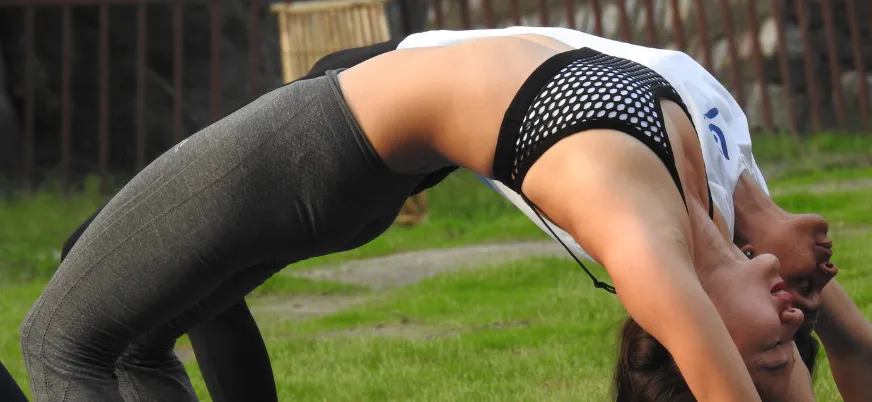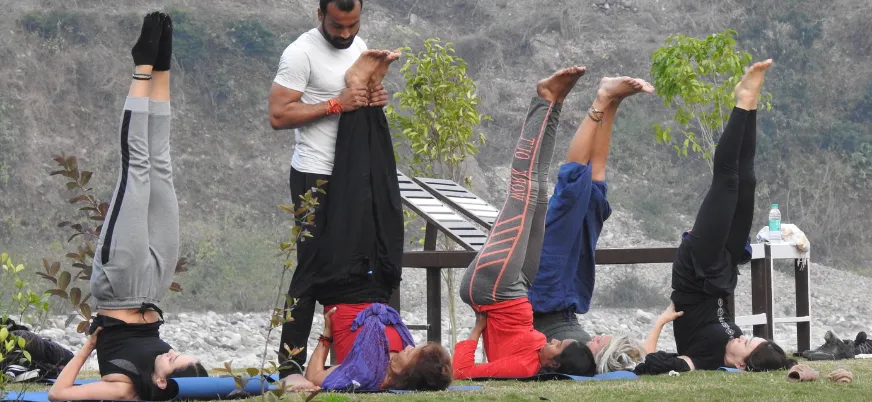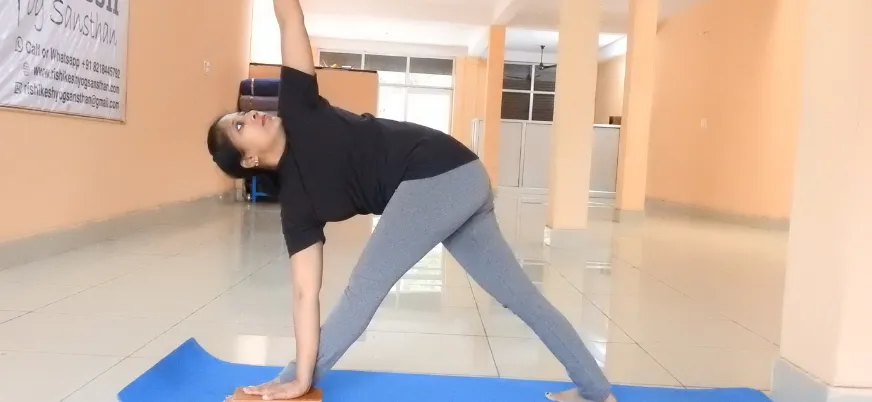100 Hour Yoga Teacher Training Course Dates
| Date |
Course Fees |
Booking |
|
Triple Shared |
Double Shared |
Private |
|
| 1st - 14th Dec |
$399 USD |
$449 USD |
$499 USD |
Enroll Now |
| 1st - 14th Jan |
$399 USD |
$449 USD |
$499 USD |
Enroll Now |
| 1st - 14th Feb |
$399 USD |
$449 USD |
$499 USD |
Enroll Now |
| 1st - 14th Mar |
$399 USD |
$449 USD |
$499 USD |
Enroll Now |
| 1st - 14th Apr |
$399 USD |
$449 USD |
$499 USD |
Enroll Now |
| 1st - 14th May |
$399 USD |
$449 USD |
$499 USD |
Enroll Now |
| 1st - 14th Jun |
$399 USD |
$449 USD |
$499 USD |
Enroll Now |
| 1st - 14th Jul |
$399 USD |
$449 USD |
$499 USD |
Enroll Now |
| 1st - 14th Aug |
$399 USD |
$449 USD |
$499 USD |
Enroll Now |
| 1st - 14th Sep |
$399 USD |
$449 USD |
$499 USD |
Enroll Now |
| 1st - 14th Oct |
$399 USD |
$449 USD |
$499 USD |
Enroll Now |
Course Syllabus: 100 Hour YTTC
-
55 Hours
Techniques, Training and Practice
Asana | Assignment | Pranayama | Meditation
-
10 Hours
Anatomy & Physiology
-
15 Hours
Yoga Humanities
History | Philosophy | Ethics
-
20 Hours
Professional Essentials
Teaching Methodology | Professional Development | Practicum
A Basic Pranayama in Yoga, involves the conscious control and enlargement
of vital life force with the help of practiced breathing techniques for
expansion of the life energy and clear mental space. Derived from the
Sanskrit words "Prana" which refers to life force and "Yama" referring
to control, Pranayama is, therefore, the conscious regulation and
enlargement of vital life force through practiced breathing techniques.
Students in our course acquire practical knowledge through their
training on methods that harmonize body, mind, and spirit, equipping
themselves with the skills to navigate any successful yogic journey.
Course Overview
- Introduction to Pranayama : Getting to know the
core of Pranayama and its importance in yogic practice.
- Natural Breathing Observation : Activities to
observe and learn about effortless natural breathing.
- Abdominal Breathing : This uses the diaphragm
primarily to deepen the breathing and relax during inhalation.
- Clavicular Breathing : Developing awareness of
breath movement in the upper chest area.
- Thoracic Breathing : Using the chest for more
extensive breathing ability and lung strength.
- Yogic Breathing : The synchronized practice of
abdominal, thoracic, and clavicular breathing for full-body
revitalization.
- Nadi Shodhana : Alternate nostril breathing to
balance the energy channel and to calm the mind.
- Bhastrika : it is the energizing of breathing
technique that helps in stimulating the inflow of prana.
- Kapalbhati : Kapalbhati is the purifying
respiratory exercise which purifies the respiratory system other
than concentration improvement.
- Bhramari : The humming bee, it heals the nervous
system and gets the mind clear.
- Shitali : Cooling breath practice to calm the body
and mind.
- Shitkari : Another cooling breath technique for
relaxation and refreshing energy.
- Surya Bhedi : Right-nostril breathing to activate
warmth and boost energy.
- Chandra Bhedi : Left-nostril breathing to calm and
cool the body.
This comprehensive Pranayama curriculum is crafted to guide students on a
transformative journey through the breath, building a solid foundation
for their professional and personal growth in the world of yoga.
Mudras are symbolic hand gestures or "yoga of the hands" that channel
particular mental and physical states. By positioning the fingers in
different ways, Mudras help awaken the dormant energy within and strike
a balance in the body's internal systems. These gestures are used to
express a state of mind and align energy pathways, enhancing focus and
inner calm.
Key Mudras in Yoga:
- Jnana Mudra : Gesture of wisdom to enhance
knowledge and clarity.
- Chin Mudra : Gesture of consciousness for calmness
and awareness.
- Yoni Mudra : A symbol of origin, representing inner
strength and focus.
- Bhairava Mudra : Gesture of stability and
grounding.
- Hridaya Mudra : Heart gesture to open emotional
channels and promote compassion.
- Nasikagra Mudra : Nose-tip gazing gesture for deep
concentration.
- Khechari Mudra : Tongue lock for expanding
consciousness and awakening higher energy.
Practicing these Mudras daily can help maintain mental clarity, physical
balance, and spiritual growth, supporting a deeper connection in one’s
yogic journey.
"Bandha" means to hold, tighten, or lock. Practicing Bandhas in yoga with
the intention to confine and direct prana, the life energy, in specific
parts of the body, helps develop and preserve vital energy. The
continuous practice of Bandhas will not only make the physical body
strong but it will also serve as a means of waking the Kundalini energy
by regulating and then restricting the Prana flow.
Core Bandhas in Yoga Practice:
- Introduction to Bandhas : Overview of Bandhas and
their role in controlling energy flow.
- Moola Bandha : Root lock to stabilize and ground
energy at the base of the spine.
- Uddiyana bandha : abdominal lock, strong core
muscle development, and upward flow of energy.
- Jalandhara Bandha : Locks the throat to regulate
flow of energies from the head to the body.
- Maha Bandha : The "Great Lock," a combination of
all three Bandhas for powerful energy alignment.
By incorporating these Bandhas into their practice, students can deepen
their control over Prana, supporting balance, vitality, and spiritual
growth on their yogic path.
Generally, meditation is a way that reposes the mind to restfulness,
calmness, and awareness. This mental exercise, sometimes performed
privately while sitting still in a state of focus, eyes shut in calm,
serves to foster attention, serenity, and awareness toward one's self.
For our students, meditation provides one of the greatest opportunities
to prepare for a balanced and professional life in yoga.
Important Practices in Meditation:
- Meditation : Learn the basics of meditation and how
one will lead you toward inner peace and mental clarity.
- Meditation Benefits : This is the second part of
the list, where one learns how meditation affects their body, mind,
and even spirit.
- Om Meditation : How to Work with the Universal
Energy Using the vibrational resonance of "Om"
- Mantra Chanting Meditation : Building Focus and
Inner Balance Using Repeated Mantras.
- Soham Meditation : Inspired breathing meditation
that flows like the natural rhythm "So-Ham" (I am That).
- Shiva Meditation : Reflection of qualities of Shiva
to build self-awareness and stability.
- Yoga Nidra Meditation : Deep relaxation technique
that brings the body and mind into restful meditative states.
- Tratak-Candle Meditation : Candle gazing to focus
and to clear the mind.
- Chakra Meditation : Awaken the centers of energy
for balancing and aligning your body's energy.
- Buddha Meditation (Vipassana) : Insight meditation
that assists in developing awareness as well as the observation of
self.
- Inner Light Meditation : Visualization of inner
light brings serenity and clarity within.
- Prana Meditation : Using awareness of breath to
connect with and harness life energy or Prana.
- Kundalini Meditation : An awakening or rising of
the Kundalini energy that serves to heighten awareness.
Basically, this meditation curriculum is designed for students to learn a
journey of inner exploration and arms for personal growth, calmness, and
self-discovery essential in their yogic path.
Mantra chanting is a powerful spiritual practice that brings emotional
and mental balance. Sacred sounds repeated release tension so that the
practitioner enters a state of peace and happiness. Mantras have been
used for thousands of years as a mental calming process, clarity of
thought, and an elevation of consciousness.
Key Mantras in Practice:
- Guru Stotram - Akhanda Mandalakaram : A chant
honoring the Guru as the embodiment of universal wholeness.
- Patanjali Prayer - Yogena Chittasya Padena Vacham :
A prayer invoking Patanjali for blessings on the journey of yoga and
knowledge.
- Shanti Mantra - Om Sahana Vavatu : A peace mantra
for protection and harmonious learning, often recited in
teacher-student gatherings.
- Pavamana Mantra - Asato Mā Sadgamaya : A mantra for
guidance from ignorance to truth, darkness to light, and mortality
to immortality.
- Food Prayer - Brahmarpanam Brahma : A prayer of
gratitude and mindfulness before meals, recognizing the divine in
food.
- Completeness Mantra - Om Purnamadah Purnamidam : A
mantra that celebrates completeness and the infinite nature of
creation.
These mantras create a sense of inner peace, gratitude, and focus,
helping students find harmony within themselves as they grow on their
yogic path.
Yoga Philosophy, also known as Yoga Darshan, is a dualistic approach that
serves as the personal guide toward achieving self-realization and inner
peace. The main goal of Yoga Philosophy is to guide one toward a
fulfilling and well-balanced life toward salvation (moksha). This
philosophy integrates history, concepts, and foundational yogic
principles with the realities of modern living and brings wise
traditions together.
Students of Yoga Philosophy learn the historical and philosophical
background to yoga, making them familiar with the doctrine and enabling
them to apply its wisdom in their respective lives and the lives of
others.
Working with the body's structure and parts, it is of course obligatory
to learn about anatomy and physiology in the practice of yoga. A healthy
practice will require understanding the anatomical and physiological
makeup of the body; therefore, this will give a clearer outline for safe
performance of every asana, maximizing safety while maximizing the value
of the practice.
This study of yoga anatomy covers:
- Basic anatomy and physiology,
- Insights into the muscular, skeletal, and nervous systems,
- Techniques for aligning asanas accurately,
- Effective cues and adjustments in the classroom.
By understanding anatomy, students can refine their teaching skills,
provide clear explanations, and ensure their classes support safe,
effective movement for all practitioners.
The ancient medicinal science of Ayurveda, hailing from India, draws
power from nature to build health and wellness. Traditionally called the
"Science of Life," Ayurveda employs a wide range of herbs as well as
copious use of other natural remedies in healing along with preventative
measures against possible future illnesses. It tends to the body, mind,
and spirit to keep it in a state of balance and harmony that result in
long-term health.
Shatkarma, or Shatkriya, is the ancient yogic cleansing exercise as
described in old texts of classic yoga. There are six purification
techniques that form the Shatkarma, which are all aimed at cleansing the
entire body and getting it to clarity of body and mind. Practiced in the
early morning alongside asanas, these techniques aid in removing toxins
and preparing the body for deeper yogic practices.
The Six Shatkarma Techniques:
- Neti : Nasal cleansing to clear the sinuses and
enhance breathing.
- Trataka : Gazing practice to improve focus and
cleanse the eyes.
- Kapalbhati : Purification by the lungs through
powerful breathing for improving lung health.
- Dhauti : Purification by clearing the cleansing of
the digestive pipe, even by forced vomiting.
- Nauli : it's a self-massage by contracting the
abdominal muscles so that the inner organs are stimulated and
cleansed.
- Basti : The cleaning of the digestive system by the
reverse enema or colon cleansing.
Each Shatkarma technique contributes to overall health, helping yogis
attain a purified body and mind as a foundation for their yoga journey.
Yoga involves an intimate understanding of body structure, making
knowledge of anatomy and physiology essential for practicing and
teaching yoga safely. Knowing the functions of the body enhances the
ability to perform, adjust, and instruct each asana correctly, creating
a safe and efficient learning environment. By studying anatomy, students
gain deeper insight into muscle groups, joint movements, and alignment
principles, improving their ability to give clear explanations, correct
asanas, and provide helpful cues in the classroom.
Equally important is the art of teaching itself. The Teaching Methodology
class is crucial in a yoga teacher training course, as it goes beyond
the "what" to cover the "how" — how to convey knowledge effectively,
adapt instructions for diverse students, and create an engaging and
supportive learning atmosphere. By focusing on communication skills,
sequencing, class management, and teaching techniques, this class
prepares students to become confident and inspiring yoga instructors.
Together, these subjects lay the foundation for a successful yoga
teaching journey.
The class on Yoga Alignment and Adjustment is important for students as
well as teachers; it therefore will result in appropriate posture and
positioning during every asana. Proper alignment averts injury while
amplifying the benefits of each pose. As soon as the student master in
the fundamental concept of alignment, then he/she will be even more
aware of his/her body's movements, thus ensuring security and safety
while performing postures.
You will learn how to identify and correct misalignments, and how to
guide others in achieving proper form or how to make adjustments that
promote ease and safety. These skills are essential for developing the
deeper connection to the body as they improve flexibility, strength, and
balance in yoga practitioners.
Yoga therapy is the practice of using yogic principles and practices in a
preventive and curative mode. It uses asanas, pranayama, and meditation
along with many other yogic techniques for rectification of inner
imbalance. The intention of yoga therapy is not only towards recovery
but also towards the prevention of disease by ultimate healthfulness of
being.
Each yogic process indeed has its influence at the gross to the subtle
level in the body. This is where asanas develop muscles and help
elongate them, pranayama helps regulate the breath for increased energy
flow, and meditation relaxes the mind, reducing stress levels. Through
these aids of practices, yoga therapy helps restore balance at the
physical, mental, and emotive level of health, thus supporting the
body's healing potential.
Asana is the starting step of yoga. Also termed the Seated posture, it
allows other asanas to get performed. It is done in all styles of yoga,
i.e. Hatha, Ashtanga, Vinyasa & Iyengar. It comprises Methodology and
Asana Practice. Daily 3-4 hours of practice of Yogic postures are to be
done. The introduction of students to the different types of yogic
postures is done methodically by increasing the difficulty level step by
step. After your basic practice of Asana is done then students encounter
asana flows, adjustments and awareness & breathe of subtle aspects.
SITTING / MEDITATIVE POSTURES
- Padmasana
- Sukhasana
- Vajrasana
- Bhadrasana
- Swastikasana
(and all sitting asana variations)
STANDING POSTURESS
- Padmasana
- Tadasana
- Triyaka Tadasana
- Kati Chakrasana
- Trikonasana
- Utkatasana
- Veerbadhrasana (I, II & III)
(and all sitting asana variations)
BALANCING POSTURES
- Natrajasana
- Garudasana
- Uttitha Hasta Padangusthasana
- Pada Angushthasana
- Vriskshasana
- Vatayanasana
- Eka Padasana
- Eka Pada Pranamasana
- Baka Dhyanasana
- Dwi Hasta Bhujasana
INVERTED POSTURES
- Sirsasana
- Sarvangasana
- Padma Sarvangasana
- Urdhva Padmasana
- Moordhasana
- Salamba Sirsasana
- Halasana
- Viparita Karani
TWISTING POSTURES
- Ardha Matsyendrasana
- Astavakrasana
- Supta Udarakarshanasana
- Meru Vakrasana
- Parivritti Janu Sirsasana
(and all twisting asana variations)
FORWARD BEND POSTURES
- Janu Sirsasana
- Paschimottasana
- Pada Prasar Paschimottanasana
- Ardha Padma Paschimottanasana
- Padahastanasana
- Koormasana
- Supta Pawanmuktasana
(and all forward bend asana variations)
BACK BEND POSTURES
- Chakrasana
- Dhanurasana
- Bhujangasana
- Gomukhasana
- Matsyasana
- Supta Vajrasana
- Ustrasana
- Setuasana
- Vrischikasana
- Sarpasana
- Shalabhasana
(and all back bend asana variations)
DYNAMIC POSTURES
- Surya Namaskar
- Chandra Namaskar
- Pawanmuktasana
- Marjariasana
- Vinyasa Flow Asanas Series
(and all dynamic asana variations)
RELAXING POSTURES
- Balasana
- Savasana
- Makarasana
- Shashankasan
- Supta Baddha Konasana
- Supta Vajrasana
(and all relaxing asana variations)
Daily Yoga Schedule (Sample Schedule)
The 100-hour Hatha Yoga Immersion at Anagha Yoga School is meant to be a full and intense
way to learn. This is an example of a daily schedule. The daily schedule follows the
rules of the Yoga Alliance and includes six to seven hours of lessons. This hands-on
training will teach you everything you need to know about Hatha Yoga, such as how to
teach, do asanas, do pranayama, and meditate. If you do yoga regularly and with purpose,
you will build a strong foundation and deepen your own journey.
| TIME |
ACTIVITY |
| 06:00 - 06:45 am |
Pranayama |
| 07:00 - 08:30 am |
Hatha Yoga Asana |
| 08:30 - 09:45 am |
Breakfast & Rest |
| 10:00 - 11:00 am |
Philosophy |
| 11:15 am - 12:15 pm |
Ayurveda & Anatomy |
| 12:30 - 01:30 pm |
Adjustment-Alignment |
| 01:30 - 03:30 pm |
Lunch & Rest |
| 03:30 - 05:00 pm |
Ashtanga-Vinyasa Asana |
| 05:15 - 06:30 pm |
Mantras & Meditation |
| 06:30 - 07:30 pm |
Self Study |
| 07:30 - 08:00 pm |
Dinner |
| 09:00 pm |
Lights Off |
Food: Sattvic & Healthy
In the Anagha Yoga School, we study deeply how food engages all within
our body, mind, and emotions. Yoga divides food into three categories based on its
influence in body, mind, and emotions:
- 🏶 Sattvic Food : Nourishing, pure, and energizing, it gives
clarity, enthusiasm, and a serene, balanced mind.
- 🏶 Rajasic Food : Stimulating and often linked to restlessness,
it increases activity and mental agitation.
- 🏶 Tamasic Food : Heavy and dull, it causes sluggishness and
dizziness to the mind.
Understanding the kinds of food has taught students to be conscious about what they eat,
which helps them improve their practices in yoga.
Accommodation: Clean & Comfy
At Anagha Yoga School, accommodations blend Indian tradition with modern comforts,
providing a home-like atmosphere for students. Spaced out and tucked in nature's arms,
spacious yoga halls will be highly conducive to focused learning. Situated close to the
revered Ganga River, serenity and peacefulness provide an ideal ambience for meditation
and spiritual practices-all of which contribute to a favorable atmosphere for physical,
mental, as well as emotional well-being. The soothing surroundings thus allow harmonious
body, mind, and soul to weave together.
Frequently Asked Questions
This seeps in almost 10-12 days by soaking up 6-7 hours of training each
day.
Yes, since our teacher training course is registered with Yoga Alliance
and therefore will hold value in quality and acceptance all over the
world.
In this course, you will learn:
- Asanas and Pranayama
- Meditation
- Alignment and adjustment technique
- Anatomy
- Teaching method
- Philosophy of Yoga
No, prior experiences of yoga is not mandatory. In fact, it is apt for
beginners as well as practitioners who can take their practice deeper.
You will become eligible for the recognized certificates of Yoga Alliance
and be qualified to teach yoga by the absolutely successful completion
of this course.
You get comfortable, clean, spacious accommodations in an extremely
peaceful and natural atmosphere with the sacred Ganga River nearby to
support your practice and learning.
Definitely! The course is very much a teacher training program, but it's
also a richly good program in terms of human and personal growth, for
anyone wanting to deepen their understanding of yoga and its philosophy.

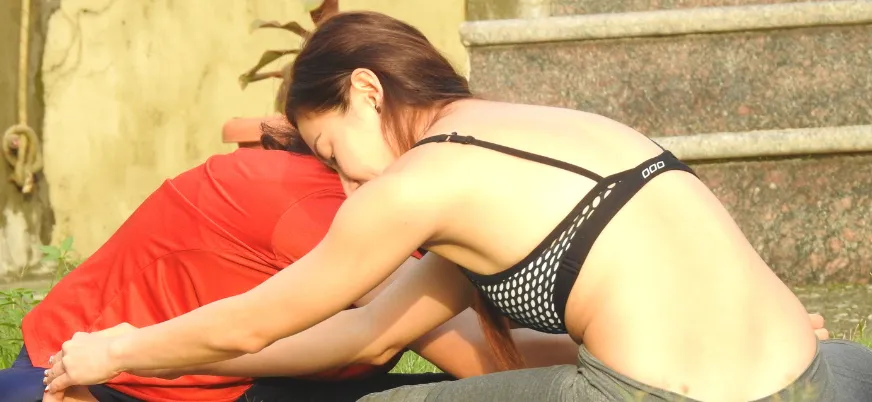
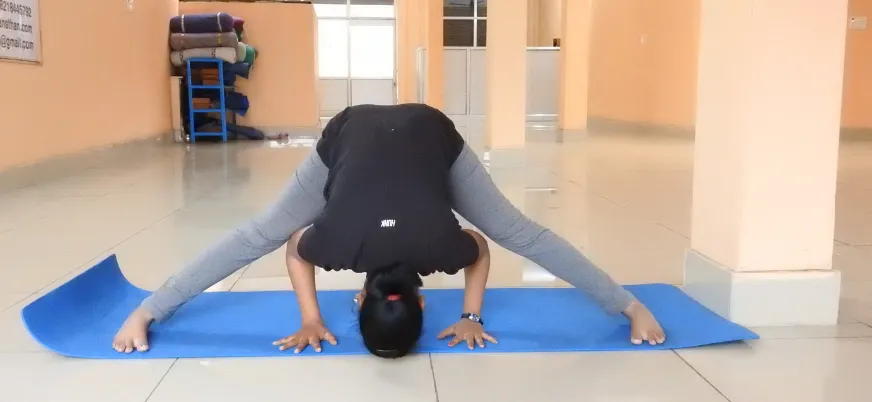
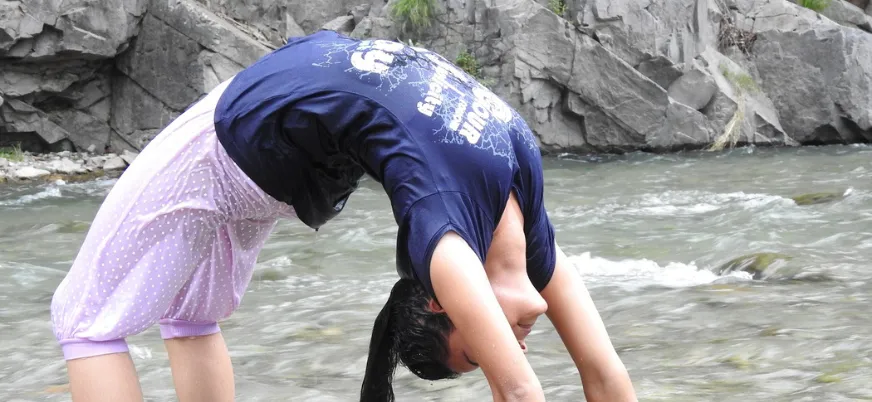











.webp)

